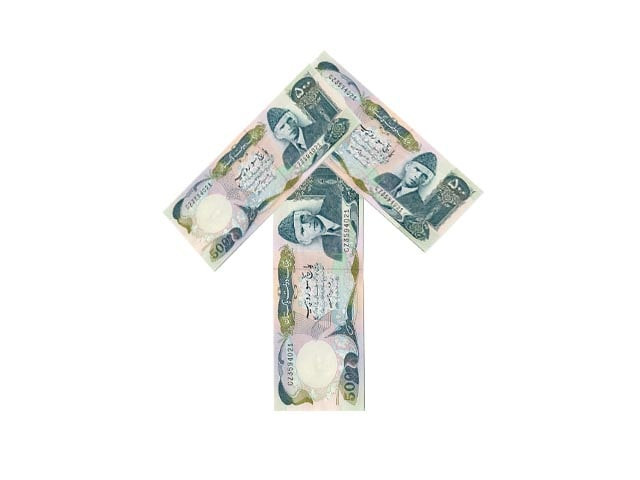ISLAMABAD:
Two days before the interest rate-setting meeting, the federal government on Monday predicted the inflation rate to stay in the current range of 3.54.5% in July, putting the spotlight on the central bank to substantially cut the rates to single digits.
“Inflation is projected to remain within 3.5 to 4.5%, though risks from recent heavy rains may affect agricultural yields and supply chains,” according to the monthly economic outlook report that the Economic Advisor Wing of the finance ministry released on Monday.
The report also came a day after a new think tank, Economic Policy and Business Development (EPBD), demanded the State Bank of Pakistan (SBP) reduce the interest rate to 6%, which is currently the highest among the regional economies.
Pakistan’s real interest rate of 7.8% represents the highest burden among regional economies, more than double India’s 3.4% and over five times China’s 1.4%, said EPBD in a statement on Sunday. It added that this excessive real cost of capital makes Pakistani business investments fundamentally uncompetitive.
While India’s supportive 3.4% real rate enables projected 6.5% growth in 2026, Pakistan’s punitive 7.8% real rate constrains growth to just 3.4% – nearly half of India’s performance, according to EPBD.
The Monetary Policy Committee (MPC) of the central bank is going to meet on July 30 to set the interest rate for the short term. The market is not expecting more than a 1% cut despite calls from across all segments and the government to reduce the rates.
The finance ministry said in its report that Pakistan’s economy is expected to sustain its recovery in early fiscal year 2026, supported by improved macroeconomic fundamentals and rising investor confidence. Large-Scale Manufacturing (LSM) is likely to maintain momentum in June 2025, driven by increased private sector credit offtake and expanding production activity, it added. However, with an 11% interest rate despite low single-digit inflation, the investors do not feel confident to expand businesses.
Pakistan’s businesses face an existential threat from unsustainable monetary policy, according to EPBD. The anticipated minimal 0.51% rate reduction fails to address the fundamental crisis destroying Pakistan’s industrial competitiveness and fiscal stability, it added. With inflation at 3.2%, the current 11% policy rate imposes a crippling 7.8% real cost of capital on Pakistani businesses.
The finance ministry stated that the economic rebound is expected to boost imports of raw materials and intermediate goods while supporting exports of value-added products. It said that strengthening domestic demand, a stable exchange rate, steady global commodity prices, and improved foreign demand are likely to enhance exports, remittances, and imports in July 2025, reinforcing external sector stability.
Inflation last month fell to 3.2%, which the finance ministry attributed to a significant decline in perishable food prices, which fell by 10.6%, easing pressure on the overall food basket. Additionally, the housing, water, electricity, gas, and fuels group also recorded a decline of 3.3% in prices. The finance ministry said that for the new fiscal year, policy priorities include continued fiscal consolidation, enhanced revenue mobilisation, modernisation of the agriculture and industrial sectors, and improvements in the business climate and human capital development.
It added that because of these factors, real GDP is expected to grow by 4.2% in this fiscal year, alongside continued price stabilisation. The ministry underlined that the last fiscal year showed that Pakistan’s economy demonstrated clear signs of recovery and growing resilience. The economy sustained growth momentum at 2.7%, while inflation fell sharply to 4.5%, supported by a lower policy rate, exchange rate stability, and prudent macroeconomic management. However, independent economists dispute the 2.7% economic growth figure.
The EPBD said that reducing policy rates to 6% would restore competitive financing for Pakistani businesses, enable industrial expansion necessary for employment creation, support export growth through affordable working capital, and generate the business activity required for tax revenue growth. With 59% of government debt in floating-rate instruments, this reduction would immediately lower debt servicing costs, currently consuming 46% of federal expenditure, and deliver immediate fiscal relief of Rs3 trillion annually.
Pakistani businesses operate under impossible conditions compared to regional competitors. While regional manufacturers access capital at an average of 5.5% policy rates, Pakistani industry faces 11%, double the regional average, stated the think tank. EPBD said that the interest rate disparity, combined with Pakistan’s energy costs of 1214 cents per kWh versus regional levels of 59 cents, creates insurmountable competitive disadvantages.
Likewise, the economic growth differential has direct consequences for employment. Pakistan’s 22% unemployment reflects businesses unable to expand operations under prohibitive financing costs, while India maintains 4.2% unemployment through policies that enable business growth, according to EPBD. Manufacturing capacity sits idle while competitors with supportive monetary policies capture global markets. Pakistan’s export-to-GDP ratio has stagnated at 10.48% compared to India’s 21.85% and Vietnam’s 87.18%, said EPBD.
High interest rates systematically reduce corporate profitability, limit business expansion, constrain employment growth, and diminish consumer spending – all primary sources of government revenue. Pakistani businesses cannot generate the profits necessary for robust tax payments while servicing 11% debt costs. The policy framework ensures continued fiscal shortfalls while demanding impossible revenue growth.

